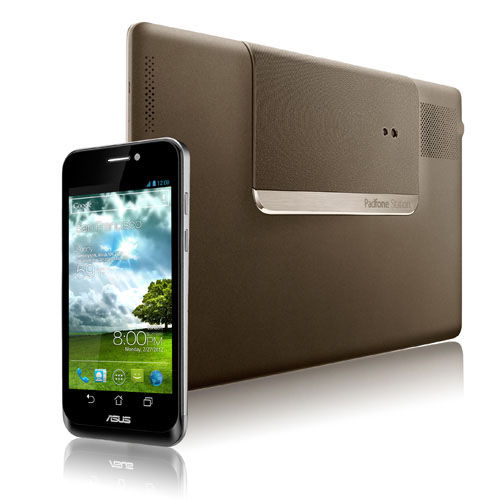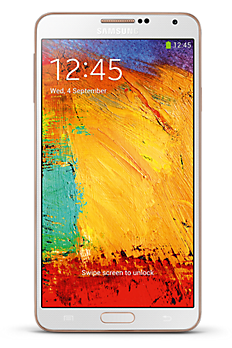How to spot a fake phone
CELLULAR PHONES
Counterfeit mobile phone manufacturers imitate all facets of a phone’s appearance to make them appear genuine. The phones outer shell and screen, the printed logos and branding, the packaging and the included accessories can all be copied, making it difficult to identify whether a phone is fake or genuine. When possible it is always preferable to buy a phone through a registered retailer or reseller who can vouch for a phones authenticity. Yet with the prevalence of internet shopping and auction websites this may not be an option. Here are a few simple tips to help you identify whether a phone is genuine or fake: KNOW THE PHONE
It is important to do a little research before buying a new phone. You should only buy a phone made by a trusted manufacturer. Before committing to a purchase you should know the phones specific model number, available colours, features, what software and hardware comes included and what warranty is offered with the product. Information about a specific model of phone can be found on the manufacturer’s website or through a registered retailer. Once you have this information it will make the job of identifying a fake much easier.
APPEARANCE
On first glance a counterfeit phone may appear identical to a genuine model. On closer comparison you may be able to identify some obvious differences between a genuine and a fake such as: the colour, location of buttons, size or spelling of the brand name. Some fakes are less obvious. Counterfeiters are able to mimic design details down to minute details making it difficult to tell if a phone is genuine. If you are able to view the product in person you may be able to notice a difference in weight, screen size, location of buttons and battery, quality of printing and paint finish, added or missing functions, quality control stickers and holograms and an overall lack of quality.
FEATURES
Counterfeit phones can have differing features to genuine models, such as dual SIM cards, analogue TV etc. Check the model number and technical specifications of the genuine phone you wish to buy and ensure they match what is being offered. Counterfeit phones also often appear to offer features that are either just not there or that are not as they are said to be. For example, built in cameras might be said to be 8 Megapixel when they are not - or offer GPS when they don't. Counterfeit phones may also differ from a genuine in colour availability, memory capacity, camera megapixels, screen quality and operating system. It is important to compare technical features to ensure the phone is genuine.
FUNCTIONALITY
Black market phones are made from sub-standard and cheap components and often run on 2nd rate or pirated operating systems.
Counterfeiters use cheap older generation chipsets, which may offer the same functionality as a genuine model but at far slower processing speeds. If you have unknowingly purchased a fake phone you will realise very quickly once you turn it on. Processing speeds are often much slower, operating systems have missing features and the phone may not be compatible with affiliated software and applications. AVAILABILITY
Counterfeit mobile phones tend to pour on to the market when a genuine model is out of stock or unavailable.
Often if manufacturers and registered sellers say a model is out of stock or unavailable, counterfeits begin to appear on auction websites and through unregistered sellers. This is also common when a phone is not available in certain colours. Beware, counterfeiters take this opportunity to deceive consumers when the genuine product is most in demand. IMEI NUMBER
Every genuine mobile phone has a serial number to register it to a carrier network. This number is called the International Mobile Equipment Identity (IMEI) number. The IMEI number can be used to verify the legitimacy of a phone. Often counterfeit models won’t have an IMEI number or use a fake one.
If you are viewing the phone in person then you can find the IMEI number on the products packaging, under the phones battery or by pressing *06 on the phone. If you are not viewing the phone in person then you should ask the retailer for the phones IMEI number.
BATTERIES
How to spot fake batteries and chargers?
Mobile phone handsets are not the only electronic product targeted by counterfeiters. Black market cell phone batteries and chargers are also infiltrating the market posing a potential health and safety risk to consumers.
Fake batteries and chargers are often offered as an after-market product, found on auction websites or in unregistered stores often at a significantly lower price than genuine products. Given the uniform appearance of most mobile phone batteries and chargers, it can be difficult to identify what products are fake and which are genuine. Here are a few simple tips to help you identify whether a battery and charger is genuine or fake: Buy from a registered manufacturer and trusted retailer
You should only buy mobile phone accessories made by a trusted manufacturer.
If you are looking to replace a battery or charger then you should refer to the original manufacturer’s information to make sure you purchase the appropriate battery of charger for your model of phone. It is important to note that you should only use a charger specified by the manufacturer to charge you mobile phone battery. You should also attempt to buy your mobile phone accessories from a trusted retailer who can verify the authenticity of their products. Appearance
Most mobile phone batteries and chargers look very similar, making it difficult to identify legitimate and fake products. If you are able to inspect the product first-hand then you should look for signs of poor quality such as: inaccurate printing, misspelled wording, crooked label placement and signs of defective workmanship. Some mobile phone manufacturers also place hologram stickers on their batteries, which are difficult to replicate by counterfeiters - although they do try. Warranty
All genuine mobile phone manufacturers offer a limited warranty that covers the handset, software and accessories. Most genuine accessories are covered for a certain period of time from the date of purchase by the original owner. Registered manufacturers and sellers also offer customer support and servicing of damaged products. Black market batteries and chargers rarely come with a warranty or offer customer support and servicing of damaged products. It is important to keep the receipt for any mobile phone accessory you purchase so that you can make a warranty claim if the product is faulty. It is also beneficial to keep all proof of purchase in case you have bought a fake so that you can notify the relevant authorities. Price
If the price sounds too good to be true then it probably is. Counterfeit mobile phone batteries and chargers are made from cheap substandard components allowing them to be produced at a fraction of the price of genuine products. Also, counterfeiters don’t have to invest in product research, design and safety testing. They don’t pay government taxes, import fees and are not bound by fair trade or minimum wage regulations for their employees. All these factors mean fakes can be sold at a much lower price than a genuine product.









